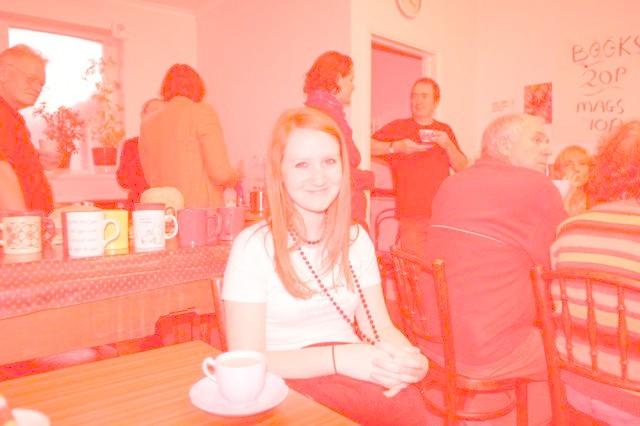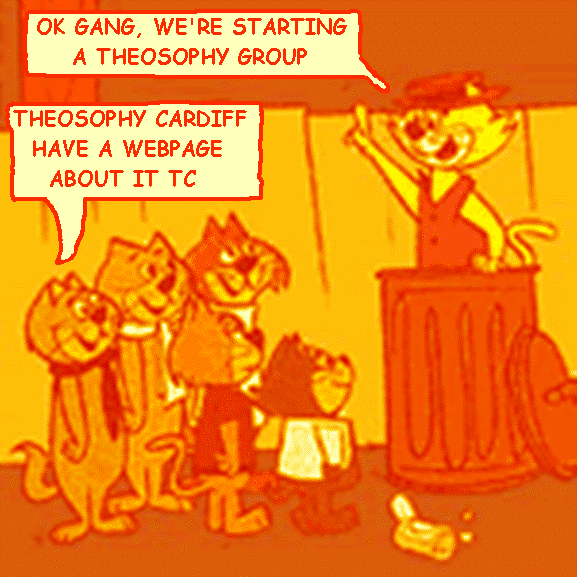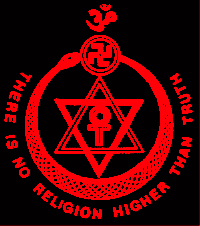
Theosophical Society,
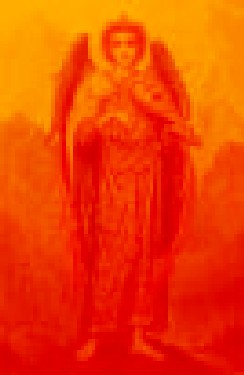
Death
&
How to Get Through It
Lentil burgers, a thousand
press ups before breakfast and
the daily 25 mile run may put
it off for a while but death
seems to get most of us in the
end. We are pleased to
present for your
consideration, a definitive work on the
subject by a Student of
Katherine Tingley entitled
“Man After Death”
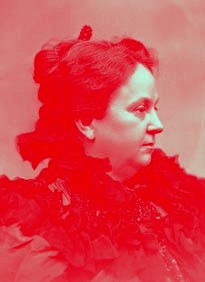
Katherine
Tingley
1847
– 1929
Founder
& President of the
Point
Loma Theosophical Society 1896 -1929
She
and her students produced a series of informative
Theosophical
works in the early years of the 20th century
Man After Death
By
A Student of
Katherine Tingley
Chapter 4
The Second Death
Theosophy
teaches that the death of the body is not the only great change that occurs at the
close of life; there is a second death, a death of the lower passional nature, the kama-rupa
or 'body of desire.' This mystic death sets free the higher principles, which
then rise to sublime heights of spiritual existence from whence they do not
return until the next incarnation.
To understand
this more clearly we must regard the higher ego or manas
as the center of self-consciousness, overshadowed by the potentiality of atma-buddhi, but during life partly incarnated in this
molecular existence, where for experience and for the elevation of lower states
of being, it has identified itself with that limited bodily condition where
passion and desire have great power. The lower manas
is an emanation, a portion sent out from the higher ego -- we may call it for
convenience the reflection or the shadow -- and while in the body it becomes
fully identified with terrestrial existence after the first few years of life,
when, as Wordsworth says:
Shades of the
prison-house begin to close / Upon the growing Boy, / But he beholds the light,
and whence it flows, / He sees it in his joy; / The Youth, who daily farther
from the east / Must travel, still is Nature's priest, / And by the vision
splendid / Is on his way attended; / At length the Man perceives it die away, /
And fade into the light of common day.
It has
forgotten "heaven which is its home." The false personality, the
compound of the lower manas -- this emanation of the
higher -- the passions, and a number of sensory impressions derived from a long
train of daily experiences strung together by the thread of physical memory, is
what we call our personal self, Mr. or Mrs.---- as the case may be; but all the
time the real reincarnating ego, the higher individuality, is behind, watching,
guiding, and helping, whenever the lower self will allow its voice -- the
conscience -- to be heard. It is the guardian angel.
At death the
body, the astral, and the physical vitality or prana, return to their own
molecular or atomic states, and for the present we need say no more about them.
The inner man
now stands freed from his physical sheath, but he is none the less a
personality; he is still entangled in those passions he has been weaving around
himself since infancy. He is now on the kama-loka
plane, the natural home of desire and passion. The perfectly legitimate normal
existence of other states of being, beyond and within the ordinary terrestrial
plane, blending into and interpenetrating it, is a conception people find
difficult to realize in some cases. Even the lowest of these planes are
invisible to our embodied senses except under very unusual circumstances, and
though they shade into each other like the colors of the spectrum, each one is
distinct and characterized by a dominant state of consciousness.
Most people
are in the habit of thinking of everything on terrestrial lines, of supposing
that the higher as well as the lower feelings disappear utterly with the
destruction of the brain, or else of putting the whole question aside as a
hopeless mystery. But to see the truth the student must look upon the things of
the mind and the soul from higher ground.
Reasoning,
which does fairly well for the things of the body and the mechanical forces,
will not apply to supermundane conditions without
modification. So when we speak of the plane of passion and desire whereon a
being may live, we must not look upon it as if it were another material planet
like ours, but rather as a subtle condition of matter within or
interpenetrating our world; the kama-lokic condition
of consciousness partly resembles the state the mind is in when dreaming an
ordinary dream. Even this comparison is very incomplete, for most of our
dreaming is done through the brain-cells. Speaking of kama-loka,
H. P. Blavatsky says that it is the semi-material plane, to us subjective and
invisible, where the disembodied "personalities," the astral forms,
called Kama-rupas, remain until they fade out from it
by the complete exhaustion of the effect of the mental impulses that created
these eidolons of the lower animal passions and desires.
H. P.
Blavatsky here uses the words astral and eidolon for a much more subtle and
ethereal principle, so to speak, than that almost physical astral which perishes
as the body decays. The kama-rupa is the subjective
being (subjective from our terrestrially objective position but objective
enough on its own plane) composed of the whole of the passional
nature of the man that was; and for a while the higher ego cannot withdraw the
shadow, the emanation or lower manas, which has
gotten entangled in it. In some cases the lower consciousness absolutely
dominates the position and the higher ego is compelled to break off from its
shadow. This terrible fate for the lower manas even
happens occasionally during life, and then we see the awful spectacle of a
seemingly human being entirely destitute of conscience -- a soulless being --
although often highly intellectual. The kama-lokic
plane has many divisions, each one in harmony with the grade of materiality of
the being passing through it. In the Egyptian Book of the Dead they are
symbolized by the many portals the soul has to pass through before being
finally allowed to enter the Elysian fields of Aaru.
At each gateway he has to give the password, showing advance in spirituality
and purification.
As the
departed soul progresses in purification it approaches nearer and nearer the
Father in Heaven, the higher ego, and at the same time the kama
principle fades away, only leaving behind it the seeds of future action, the
seeds that have been sown in the life just passed and which have to come to
fruition in some later incarnation. Only the highest thoughts and feelings of
the past life can enter into the final state of heavenly bliss, but before this
can be attained the gradual change called the second death has to be faced.
The general
theosophical teaching of the second death is nothing new, and as it is a fact
in the orderly progress of the soul, the most enlightened of the ancient
philosophers knew of it and have handed it down to us, who have greater
difficulties in investigating for ourselves. The sacred knowledge of the
mysteries of death cannot be found by the invocation of the fading kama-rupic shades of the dead in seance-rooms
or by any ordinary means known to science.
Penetration
behind the veil of illusion that wraps us so closely can only be done with
faultless vision by those who have passed entirely beyond the entanglements of
selfish desire. Only those Masters of Wisdom who have attained perfect
compassion, the "perfect love that casteth out
fear," can venture into and return safely from those regions "from
whose bourn no [uninitiated or untrained] traveler returns." The visions
of such imperfect seers as Swedenborg, Scipio Africanus,
St. Teresa, and the like are often quite unreliable, for they are colored by
preconceptions arising from their own particular school of theology acting
through self-hypnosis, as well as by gigantic personal limitations. Plutarch
puts the ancient theosophic teaching very clearly,
though of course, he could not explain anything fully as the whole detail
belonged to the inner Mysteries.
He says:
Now of the
deaths we die, the one makes man two out of three and the other one of [out of]
two. The former is in the region and jurisdiction of Demeter; whence the name
given to the Mysteries, teletai, resembles that given
to death, teleute. The Athenians also heretofore
called the deceased sacred to Demeter. As for the other death, it is in the
moon or region of Persephone.* .
. . And as
with the one, the terrestrial, so with the other, celestial, Hermes doth dwell.
This suddenly and with violence plucks the soul from the body; but Proserpina mildly and in a long time disjoins the understanding
from the soul.
. . . Now both
the one and the other happen thus according to nature.
It is ordained
by Fate [Fatum or Karma] that every soul, whether
with or without understanding [mind] when gone out of the body, should wander
for a time -- though not all for the same -- in the region lying between the
Earth and Moon [Kama-loka].
For those who have been unjust and dissolute suffer then the punishment due to
their offenses; but the good and virtuous are there detained till they are
purified and have, by expiation, purged out of them all the infections they
might have contracted from the contagion of the body, as if from foul health,
-- living in the mildest part of the air, called the Meadows of Hades, where
they must remain for a certain prefixed and appointed time.
And then, as
if they were returning from a wandering pilgrimage or long exile into their
country, they have a taste of joy . . . etc.
[*Proserpina, or Persephone, stands here for
post mortem Karma, which is said to regulate the separation of the lower from
the higher "principles" -- the soul, as Nephesh,
the breath of animal life, which remains for a time in Kama-loka,
from the higher compound Ego, which goes into the state of Devachan, or bliss.]
CONSCIOUSNESS AND PERSONALITY
Before passing
on to the consideration of the region of Paradise where the higher manas and the spiritual aroma of the lower manas become one and unite with the higher self, it will be
well to take another glance at the question of reflected or emanated
intelligence, a great stumbling-block to beginners.
The
superficial materialism of this age -- not only the theoretical disbelief in
the existence of immortality, but the modern ideals of practical life -- have
brought so many millions into such a settled way of thinking of themselves as
nothing but this body and brain-mind that it requires some exercise of will to
break up the hypnotic illusion and to see things in a larger way and with a
broader view. But when this is done, what a relief to find it is not necessary
to believe, as the theologians have indoctrinated us in their ignorance, that
our present limited personalities will continue to exist in heaven or hell
throughout all eternity; nor to have to take refuge in a natural, instinctive
horror of that wearisome belief -- in the melancholy hope of annihilation!
All things
possess self-consciousness in
potentiality;
every atom on each plane of being has it in latency if not in action, and the
principles that the ego builds round itself in order to come into touch with
the many phases of earth-life receive a partial awakening from its contact.
Think of a light shining through differently colored panes of glass, some of
which remain phosphorescent for a while after the withdrawal of the inner
light, a physical fact which partly illustrates the superphysical
condition of the lower states of consciousness when the higher ego has passed
on.
The whole of
nature is ready at the first favorable moment to acquire self-conscious existence;
the greater object which man is struggling to reach (and all things are tending
to become man on their way upward) is to "enjoy the Glory of God," in
the language of the theologians. We would prefer to put it: that all things
should become aware of the plan of the divine Oversoul
of which they are expressions. Observe that the word God is not used in
theosophy with any personal signification -- unless the ordinary, limited
meaning of the word personal is set aside as so many theologians try to do by
their desperate attempts to combine the incompatible in their efforts to define
the nature of God. By this almost creative power of a higher consciousness to
light the fires in less evolved substance, the illusion is produced in the mind
that it can divide and subdivide itself; but actually the original
consciousness must remain a unity and does not lose its identity.
The basis in
which it works will change, or more exactly, it will pass through many
fundamentally distinct states, but once having arrived at that feeling, the
sense of I-am-I exists through all the changes of form and growth during
earth-life. Even during the states of so-called unconsciousness
(unconsciousness to the waking mind, such as when the brain is under the effect
of hypnotism) there is no real blank, for when the subject is again hypnotized
the lost memory of what has taken place during the hypnotic state returns and
can even be made permanent. Even the character of the personality may change,
but the spectator, the inner man "for whom the hour shall never
strike," looks on and recognizes the changes and profits by the experience
gained through the lower self. Back of all there is that which is still more
spiritual than the higher ego: the higher self -- the divine breath, buddhi illuminated by atma, that
which is one, the Oversoul.
"Lift thy
head, O Lanoo; dost thou see one, or countless lights
above thee, burning in the dark midnight sky?"
"I sense
one Flame, O Gurudeva, I see countless undetached
sparks shining in it."
"Thou sayest well. And now look around and into thyself. That
light which bums inside thee, dost thou feel it different in anywise from the
light that shines in thy Brother-men?"
"It is in
no way different, though the prisoner is held in bondage by Karma, and though
its outer garments delude the ignorant into saying, 'Thy Soul and My
Soul.'" -- From an Eastern esoteric catechism, quoted by H. P. Blavatsky
in
The Secret Doctrine 1:120
Now we have
traveled in our imaginary journey a long way with the advancing soul, and
though many mysteries have been left yet unexplained and many gaps remain to be
filled as the student makes progress in impersonality, still the broad outlines
of the coherent system are now apparent.
For more info on Theosophy
Try these
Cardiff Theosophical Society meetings
are informal
and there’s always a cup of tea afterwards
The Cardiff Theosophical Society Website
The
National Wales Theosophy Website
This
is for everybody not just people in Wales
Dave’s
Streetwise Theosophy Boards
If you
run a Theosophy Study Group,
please feel free
to use any material
Theosophy Cardiff’s Instant Guide to Theosophy
General pages
about Wales, Welsh History
and The History of
Theosophy in Wales
One Liners & Quick Explanations
The Most Basic Theosophy Website in the Universe
If you run a
Theosophy Group you can use
this as an
introductory handout
The
South of Heaven Guide to
Theosophy and Devachan
The main criteria
for the inclusion of
links on this site is
that they are have some
relationship (however
tenuous) to Theosophy
and are lightweight,
amusing or entertaining.
Topics include
Quantum Theory and Socks,
Dick Dastardly and Legendary Blues Singers.
No
Aardvarks were harmed in the
The Spiritual Home of Urban Theosophy
The Earth Base for Evolutionary Theosophy
A
B
C
D
EFG
H
IJ
KL
M
N
OP
QR
S
T
UV
WXYZ
Complete Theosophical Glossary in Plain Text Format
1.22MB
Preface to the American Edition Introduction
Occultism and its Adepts The Theosophical Society
First Occult Experiences Teachings of Occult Philosophy
Later Occult Phenomena Appendix
Preface
Theosophy and the Masters General Principles
The Earth Chain Body and Astral Body Kama – Desire
Manas Of
Reincarnation Reincarnation Continued
Karma Kama Loka
Devachan
Cycles
Arguments Supporting Reincarnation
Differentiation Of Species Missing Links
Psychic Laws, Forces, and Phenomena
Psychic Phenomena and Spiritualism
Try these if you are looking
for a
local Theosophy Group or Centre
UK Listing of Theosophical Groups
Worldwide Directory of Theosophical Links
____________________
Your Own
Theosophy Group Starts Here
A Guide to starting your own Theosophy Group
These are
suggestions and pointers for forming
your own independent
Theosophy Group and
not instructions on
how to form a branch of a
larger Theosophical Organisation.
The subject of
affiliation to a larger body is
covered but as
affiliation may mean compromise
and nobody owns
Theosophy anyway, we leave
that decision entirely up to you
________________________
General pages
about Wales, Welsh History
and The History of
Theosophy in Wales
Wales is a
Principality within the United Kingdom
and has an eastern
border with England.
The land area is
just over 8,000 square miles.
Snowdon in North Wales is
the highest mountain at 3,650 feet.
The coastline is
almost 750 miles long.
The population of
Wales as at the 2001 census is 2,946,200.
Hey Look! Theosophy in Cardiff
